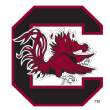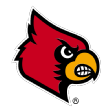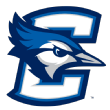The 2022-23 women's college basketball landscape is defined by more questions than in recent years.
South Carolina's Aliyah Boston and Iowa's Caitlin Clark are once again considered front-runners for national Player of the Year. Who else has a shot to be part of that conversation? Can any emerging teams (such as North Carolina and Virginia Tech) dethrone recent champions (like three-time ACC champ NC State) in their respective conferences? How many teams can contend for the national title aside from the reigning champion Gamecocks, who return the majority of its major pieces from last year?
And with the transfer portal booming thanks to the one-time immediate-eligibility transfer rule, and many top teams restocking with new additions, which teams will be most successful incorporating those transfers?
To weigh all that and more ahead of the start of the season on Monday, ESPN's M.A. Voepel, Charlie Creme and Alexa Philippou assess the best-case and worst-case scenarios for each team in our preseason Way-Too-Early Top 25 -- taking into account the deciding factors that could make the difference between teams reaching their ceilings and disappointingly plateauing.

1. South Carolina Gamecocks
Best case: Everything that worked last season -- defense, depth, Aliyah Boston's elite consistency -- works again as the Gamecocks repeat as national champions. Plus, they get the SEC tournament title that slipped away in 2022. Having the SEC tournament and the regional in South Carolina, plus the Final Four in Dallas, where the Gamecocks won their first NCAA title in 2017, makes the title journey all the more magical.
Worst case: The Gamecocks miss the clutch play of Destanni Henderson, their top 3-point shooter last season. They hit a cold stretch from the field and suffer a stunning upset in the Elite Eight. -- M.A. Voepel

2. Stanford Cardinal
Best case: Stanford went 29 years between its second (1992) and third (2021) NCAA titles, but the wait is much shorter for No. 4. Behind expected WNBA lottery pick Haley Jones and Cameron Brink, who throughout the season greatly improves her foul-trouble issue, the Cardinal claim the national championship after winning the Pac-12 regular-season and tournament titles.
Worst case: Without the experience, dependability and competitiveness of guards Lexie and Lacie Hull and Anna Wilson, the Cardinal have a few rough patches in games. But it really gets to them in the Elite Eight, and they fall short of the program's 16th Final Four. -- Voepel

3. Texas Longhorns
Best case: In their first season in their new home, the Moody Center, the Longhorns jell successfully despite having lost four of their five leading scorers from last season. Led by Rori Harmon, Texas repeats as Big 12 tournament champion and betters its Elite Eight appearances of the last two years by making its first Final Four since 2003.
Worst case: The Longhorns aren't quite able to get over some ups and downs trying to find the right chemistry with a lot of new players. They fall in the Big 12 tournament semifinals and the Sweet 16. -- Voepel

4. Tennessee Lady Vols
Best case: A deep team aided by transfers such as Rickea Jackson is able to give South Carolina a run for its money in the SEC. Then the Lady Vols' best comes in the NCAA tournament, when they make the program's first trip to the Final Four since 2008.
Worst case: While the Lady Vols make the SEC tournament final, their defeat there to South Carolina is followed by an upset loss in the Sweet 16 of the NCAA tournament as they have an inconsistent performance offensively. -- Voepel

5. Iowa Hawkeyes
Best case: With Caitlin Clark, who leads the nation in scoring for the third consecutive year, and Monika Czinano leading the way, plus the addition of Molly Davis from Central Michigan, the Hawkeyes are the most unstoppable offense the women's game has seen in years. Iowa simply outscores everyone in the Big Ten and march to the program's first Final Four since 1993.
Worst case: Defensive lapses continue to hold back the Hawkeyes. The lack of a rim protector haunts them in big games and, despite winning the Big Ten regular-season crown, the Hawkeyes fail to win the conference tournament and exit the NCAA tournament in the second round for the second straight year. -- Charlie Creme

6. UConn Huskies
Best case: A healthy Azzi Fudd, now a sophomore, materializes as the next great UConn player, making it easy at times to forget the Huskies are playing without 2020-21 national Player of the Year Paige Bueckers. Sophomore Caroline Ducharme, graduate student Dorka Juhasz and junior Aaliyah Edwards step up as consistent forces to help make up for the three UConn seniors drafted into the WNBA in April. UConn surprises some onlookers by making a run to the Final Four yet again.
Worst case: Injuries and lack of depth, especially at the point guard spot with Bueckers' injury, hamper UConn's potential. The Huskies don't have anyone ready to emerge as consistent go-to players, and they're as ineffective defensively as Geno Auriemma complained following their "secret scrimmage" against UMass. The Huskies' streak of 14 consecutive Final Four appearances is snapped in the Elite Eight or Sweet 16. -- Alexa Philippou

7. Louisville Cardinals
Best case: Junior Hailey Van Lith emerges as the superstar so many have anticipated. Classmate Olivia Cochran takes the next step to turn into one of the best posts in the ACC. Chrislyn Carr (Syracuse) and Morgan Jones (Florida State) become Jeff Walz's next stellar additions from the transfer portal, helping the Cardinals make consecutive Final Four appearances for the first time in program history.
Worst case: All the personnel change -- the absence of Swiss Army knife Emily Engstler, the changeover at the point guard spot -- comes back to bite Louisville. Van Lith stalls in her development. The new pieces just can't mesh with the rest of the returners, and the team lacks the typical toughness Louisville is known for. The Cardinals are overtaken in a stacked ACC and suffer a Sweet 16 upset. -- Philippou

8. Notre Dame Fighting Irish
Best case: Olivia Miles dazzles as an All-America-caliber player despite being just a sophomore. Transfers Kylee Watson (Oregon) and Lauren Ebo (Texas) inside presence helps the Fighting Irish overcome the loss of Maya Dodson. Freshman KK Bransford is able to contribute right away. The experience the team gained from nearly upsetting NC State in the Sweet 16 a year ago powers them atop the ACC and toward the deepest run Niele Ivey has managed since taking the reins of the storied program.
Worst case: Notre Dame's defensive holes, especially down low with the departure of Dodson, are too much to overcome. The Irish's inability to finish games -- a problem last season and one the team is fixated on erasing ahead of the 2022-23 campaign -- still haunts them. Notre Dame fails to make a run in the ACC and bows out of the NCAA tournament in the first two rounds. -- Philippou

9. Iowa State Cyclones
Best case: With the addition of 6-foot-6 Stephanie Soares, the Cyclones' interior game improves, adding to a strong perimeter attack led by guard-forward Ashley Joens and guards Lexi Donarski and Emily Ryan. Iowa State wins the Big 12 regular-season title for the first time since 2000, and after previous Elite Eight runs, finally makes that long-elusive Final Four.
Worst case: The Cyclones hit familiar postseason ceilings as they meet up with teams in the Big 12 and NCAA tournaments that they can't contain defensively. They fall in the Big 12 semifinals and the second round of the NCAA tournament. -- Voepel

10. Indiana Hoosiers
Best case: Sara Scalia brings the one dimension the last few Hoosier teams haven't had: 3-point shooting. The added offense propels them to the top of the Big Ten, and senior Grace Berger challenges Clark for Big Ten Player of the Year.
Worst case: No amount of 3-pointers or solid post play from Mackenzie Holmes can make up for the leadership void left by the graduations of Ali Patberg, Nicole Cardano-Hillary and Aleksa Gulbe. Indiana fails to get a top-four NCAA tournament seed, and the string of consecutive Sweet 16 appearances comes to an end. -- Creme

11. NC State Wolfpack
Best case: Diamond Johnson takes an enormous leap as the starting point guard for the Wolfpack, while also being able to lean on returners Jada Boyd and Jakia Brown-Turner. Camille Hobby fills in just as needed for the loss of Elissa Cunane down low, and transfers Saniya Rivers, Mimi Collins and River Baldwin make immediate, meaningful impacts. Wes Moore gets his team back to the Sweet 16, and maybe even the Elite Eight.
Worst case: So much roster turnover shows as the Wolfpack look to replace four starters from last year's team. Team cohesion is tough to come by, and with so many newcomers or players asked to take on bigger roles, the Wolfpack can't find a steady rhythm. NC State struggles in an uber-competitive ACC and its run of Sweet 16 appearances is halted. -- Philippou

12. North Carolina Tar Heels
Best case: The Tar Heels are able to build off last year's momentum, helped by the fact they return four starters and 85% of their scoring production from 2021-22. Deja Kelly continues to progress as a star at the ACC and national levels, including by playing some point guard this year. New faces Paulina Paris, a freshman, and Teonni Key, a redshirt freshman who missed last season due to an ACL injury, make a difference in helping the Tar Heels reach their first Elite Eight since 2014.
Worst case: North Carolina doesn't see growth on the offensive end to keep up with its defensive prowess, and struggles to replace the experience and leadership of Carlie Littlefield at the point. A lack of depth hinders the Tar Heels' ceiling, and in the face of high expectations, they fail to make noise in the ACC or NCAA tournament. -- Philippou

13. Virginia Tech Hokies
Best case: Reigning ACC Player of the Year Elizabeth Kitley and Maryland transfer Ashley Owusu become one of the most dynamic 1-2 punches in the country, with players such as Boston College transfer Taylor Soule and junior point guard Georgia Amoore filling in the rest of the gaps. With what Kenny Brooks has called the most talented squad he has ever had in Blacksburg, Virginia Tech wins the ACC and advances beyond the Sweet 16 for the first time in program history.
Worst case: All the talent Brooks is excited about doesn't equate to winning. The Hokies miss the 3-point prowess of Aisha Sheppard, the program's all-time leading scorer who was drafted into the WNBA in April, and don't see the defensive strides they were hoping for in the offseason. The Hokies falter in ACC play and fall once more in the Sweet 16, or sooner. -- Philippou

14. LSU Tigers
Best case: As expected, Angel Reese is one of the most impactful transfers in the nation, and LSU's young players adjust well to the SEC level. The Tigers -- relying on a post attack more like coach Kim Mulkey's past teams than was the case last year in her first season in Baton Rouge -- make runs to the SEC final and the Elite Eight.
Worst case: Despite the experience of Alexis Morris, the Tigers really miss the guard attack they had last season and don't jell as quickly as they did then. They still finish top four in the SEC, but repeat last season's second-round NCAA tournament loss. -- Voepel

15. Maryland Terps
Best case: Talent rules the day and all the pieces fit. A healthy Lavender Briggs is the same player that averaged 19.4 PPG in 2020-21 and pairs with Diamond Miller to form one of the nation's most prolific backcourts. Two more transfers, Abby Meyers and Elisa Pinzan, slide into their roles seamlessly. The Terps are not only good enough to score with Iowa but are ultimately better and win the Big Ten for the seventh time in nine years.
Worst case: The guards are good, and Maryland produces a high-scoring offense, but the chemistry is never right. Angel Reese's size and versatility is really missed, and Maryland isn't a good enough rebounding team to challenge for the conference title or make it past the second round of the NCAA tournament. -- Creme

16. Oklahoma Sooners
Best case: The Sooners stay healthy and add a little stronger defense to what again is one of the most exciting offenses in the country. Madi Williams makes a case for Big 12 Player of the Year, and Oklahoma wins the league tournament title and advances to the Elite Eight.
Worst case: Oklahoma's offense is still potent, but the defense can't quite get to the level needed to win a Big 12 title. The Sooners fall again in the NCAA tournament second round. -- Voepel

17. Ohio State Buckeyes
Best case: Getting Madison Greene back to join Jacy Sheldon and Taylor Mikesell in the backcourt takes the Buckeyes to another level. Despite a tougher schedule they win another Big Ten regular-season title and again reach the Sweet 16.
Worst case: Sheldon and Mikesell experience early season shooting slumps and, without enough reliable interior scorers, Ohio State gets off to a slow start. Unable to fully recover, the Buckeyes finish in the middle of the Big Ten end just squeak into the NCAA tournament. -- Creme

18. Arizona Wildcats
Best case: Led by returners Cate Reese and Shaina Pellington, both in their fifth year, junior Lauren Ware and transfers Esmery Martinez, Jade Loville and Lauren Fields, the Wildcats are an elite Pac-12 team. They aren't able to solve Stanford, but they make the league tournament final and advance to the Elite Eight.
Worst case: Arizona finishes in the top four in the league but finds its offense a little tepid in the postseason. The Wildcats lose in the Pac-12 tournament semifinals and are upset in the NCAA tournament's second round. -- Voepel

19. Baylor Bears
Best case: Transfer Aijha Blackwell from Missouri has her most effective season yet, as does guard Sarah Andrews. The Bears thrive in a season in which they are actually not expected to win the Big 12 regular-season title, and they end up doing it once again. They follow that with the Big 12 tournament title and advance to the Elite Eight.
Worst case: The Bears can't overcome the loss of WNBA first-round draft picks NaLyssa Smith and Queen Egbo, and their long reign as Big 12 regular-season champions ends. They fall in the Big 12 semifinals and repeat last year's second-round NCAA loss. -- Voepel

20. Oregon Ducks
Best case: The Ducks get a lift from younger players such as freshman forward Grace VanSlooten as a kind of a new era begins in Eugene. Veteran guards Te-Hina Paopao and Endyia Rogers also have strong seasons as Oregon makes the Pac-12 tournament final and advances to the Sweet 16.
Worst case: The loss of forward Sedona Prince (elbow) having added to depth issues, the Ducks have to rely a little too much on inexperienced players. They fall in the Pac-12 semifinals and the NCAA tournament second round. -- Voepel

21. Nebraska Cornhuskers
Best case: Alexis Markowski becomes the best post player in the Big Ten, Jaz Shelley becomes an even stronger presence with her versatility and Sam Haiby (knee), originally thought to be out for the season, is able to return, just in time for a Cornhuskers' run to the Sweet 16.
Worst case: Haiby's leadership is missed and despite another solid season, Nebraska can't break through the upper-echelon teams in the Big Ten. The Huskers finish sixth and once again fail to win an NCAA tournament game. -- Creme

22. South Dakota State Jackrabbits
Best case: The Jackrabbits stun Tennessee in the second round of the Battle 4 Atlantis just prior to Thanksgiving, putting the rest of the country on notice. South Dakota State runs through the Summit League unbeaten and breaks through as a top-four NCAA tournament seed, hosting two games at a raucous Frost Arena. Duplicating what rival South Dakota did last year, the Jackrabbits reach the Sweet 16. Along the way, Myah Selland becomes a household name.
Worst case: The Jackrabbits win the Summit, but nonconference games against Creighton, UCLA, Mississippi State, Washington State and South Carolina all end up in the loss column. South Dakota State is only able to earn a No. 9 seed and isn't even competitive in a second-round NCAA tournament game against top-seed Stanford. -- Creme

23. Creighton Bluejays
Best case: Bringing back all but one of seven players who averaged 16-plus minutes from last season's squad that upset Iowa and Iowa State to reach the Elite Eight, the Bluejays pick up right where they left off. They compile some impressive nonconference wins, largely storming through the Big East and maybe even challenging a Bueckers-less UConn squad. Even if they can't exactly recreate last year's magic, a run to the second round or Sweet 16 of the NCAA tournament would be a win for Jim Flanery's squad.
Worst case: The Bluejays can't take advantage of their continuity and strides last year. Opponents capitalize off their lack of size (no one on the roster is taller than 6-foot-1). Creighton fails to assert itself in nonconference play and has an unimpressive run in a Big East in the face of challengers from UConn, reigning conference Player of the Year Maddy Siegrist at Villanova and DePaul's force down low, Aneesah Morrow. The Bluejays miss the NCAA tournament, as they had in the two previous iterations of the event prior to their 2022 run. -- Philippou

24. Princeton Tigers
Best case: Tabitha Amanze and 5-10 Madison St. Rose live up to their billing as the best incoming freshmen in Ivy League history, Julia Cunningham steps into Abby Meyers' role as team leader and the Tigers go a second straight season without losing an Ivy League game.
Worst case: The young players just aren't ready. Princeton doesn't fare well in its marquee nonconference games against Villanova, Texas and UConn, and a veteran Columbia team beats the Tigers twice to steal the Ivy title. -- Creme

25. Utah Utes
Best case: The Utes build on all their positive momentum from last season, led by sophomores Gianna Kneepkens (2022's top freshman in the Pac-12), Kennady McQueen and Jenna Johnson. They get a boost from transfer Alissa Pili, who was Pac-12 freshman of the year in 2020 at USC. Utah makes a second consecutive appearance in the Pac-12 title game and reaches the Sweet 16.
Worst case: The Utes are once again a top offensive team, but the defense doesn't make the strides they hoped for. Utah falls in the Pac-12 semifinals and second round of the NCAA tournament. -- Voepel
